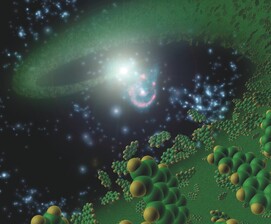Analytical Techniques for Identification and Characterization of Extraterrestrial Organic Matter
Advances in analytical techniques are essential for understanding the nature, formation, and evolutionary history of extraterrestrial organic matter. In this chapter, we briefly review analytical techniques used to detect and characterize organic matter in extraterrestrial materials. Mass spectrometry is often coupled with gas chromatography or liquid chromatography for elemental and isotopic analysis, and for identifying specific organic compounds. Spectroscopy involves interaction of molecules with electromagnetic radiation at various wavelengths. Almost every wavelength—from X-rays to radio waves—can be used for spectroscopic measurements. The most major microscopic and nanoscopic techniques are scanning and/or transmission electron microscopy. Spectroscopy and mass spectrometry can also be coupled with microscopic analysis for detailed compositional investigations.



